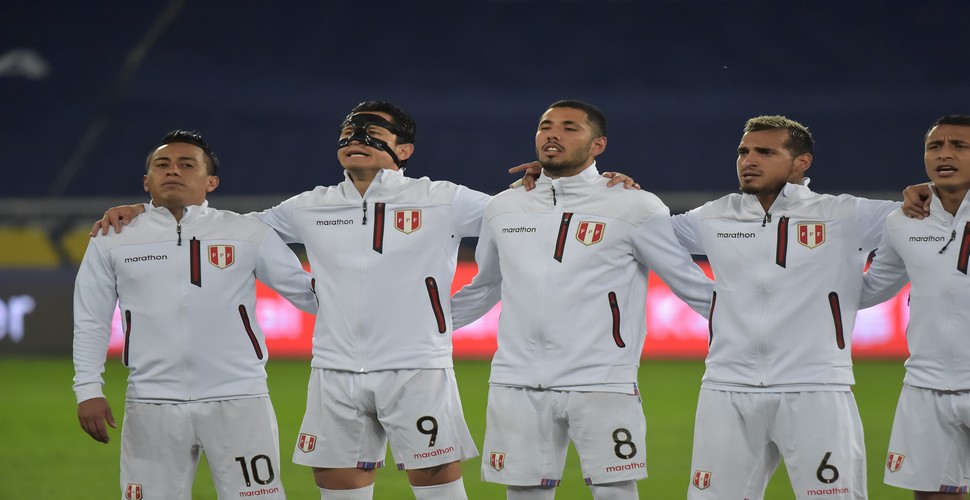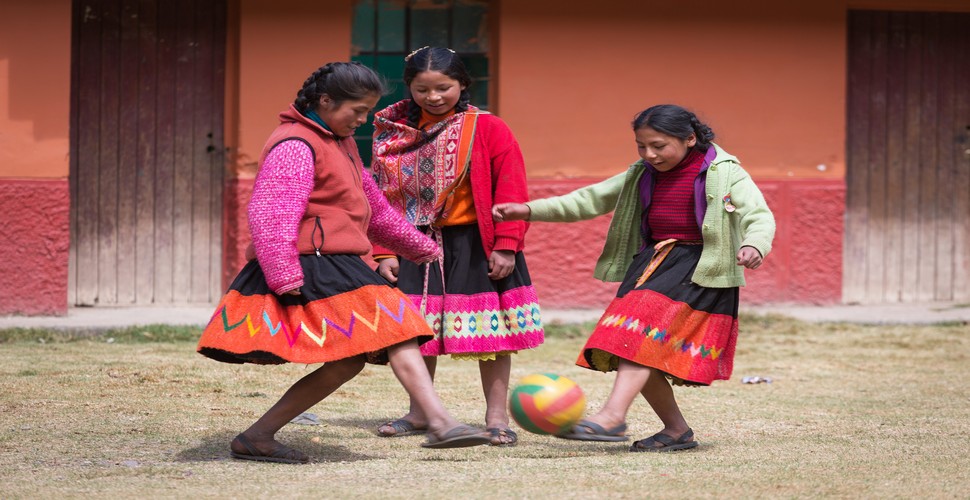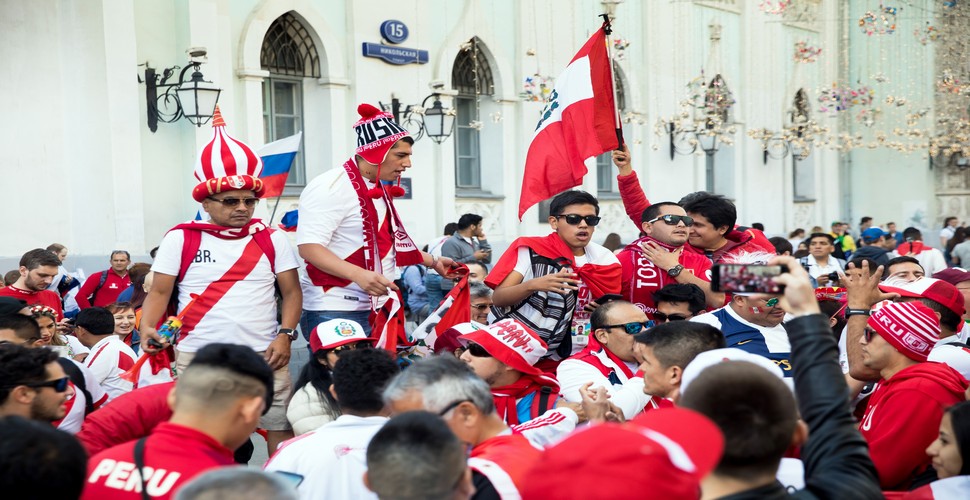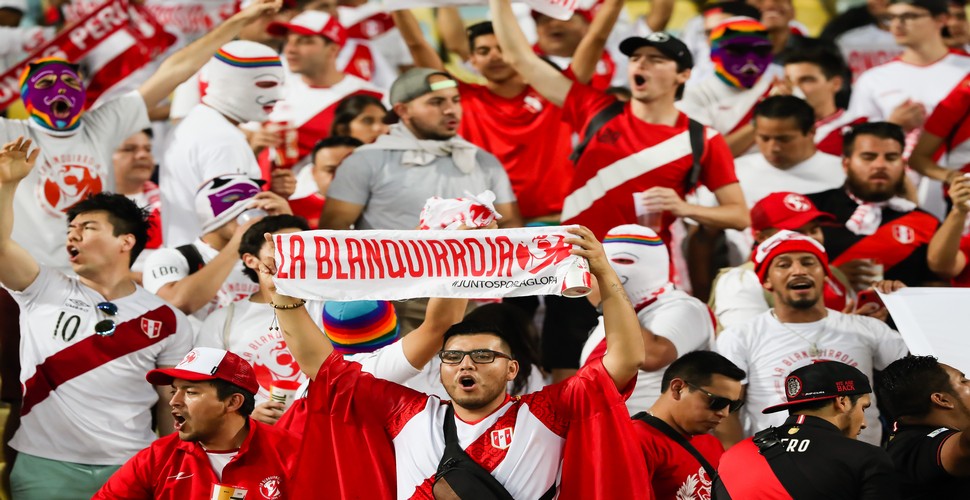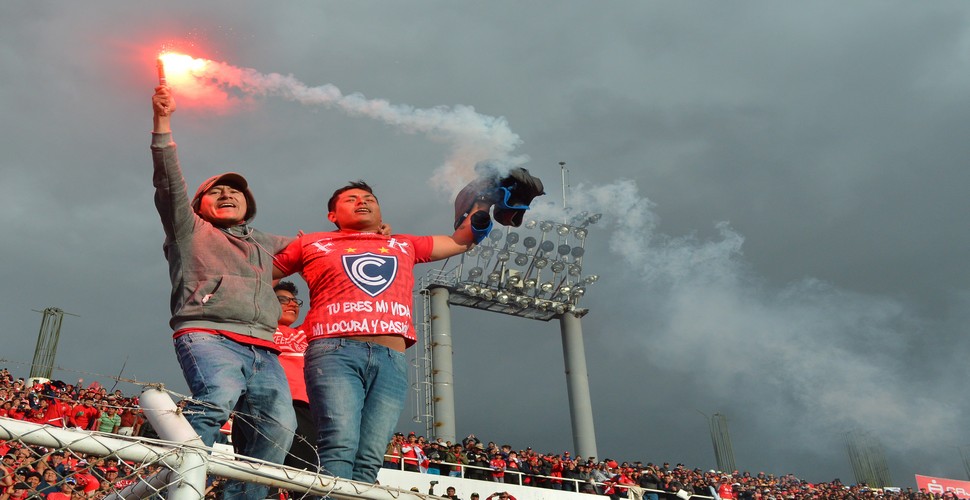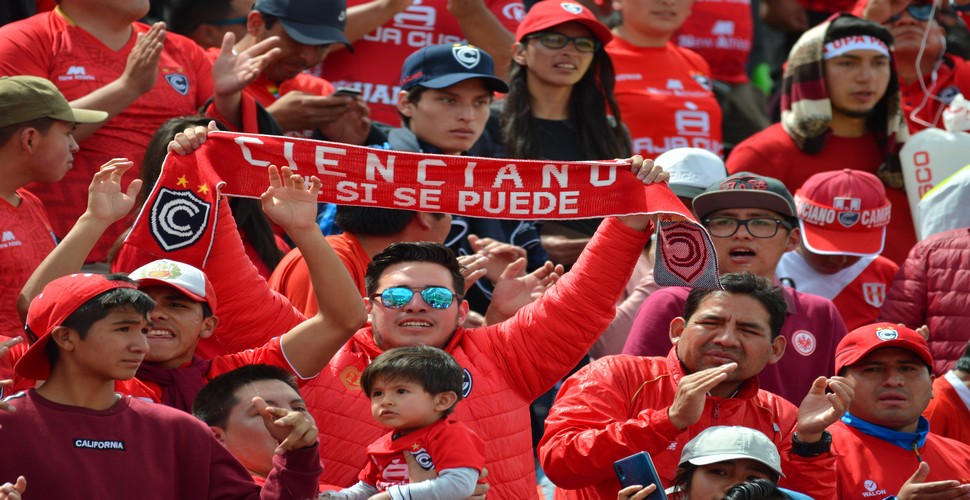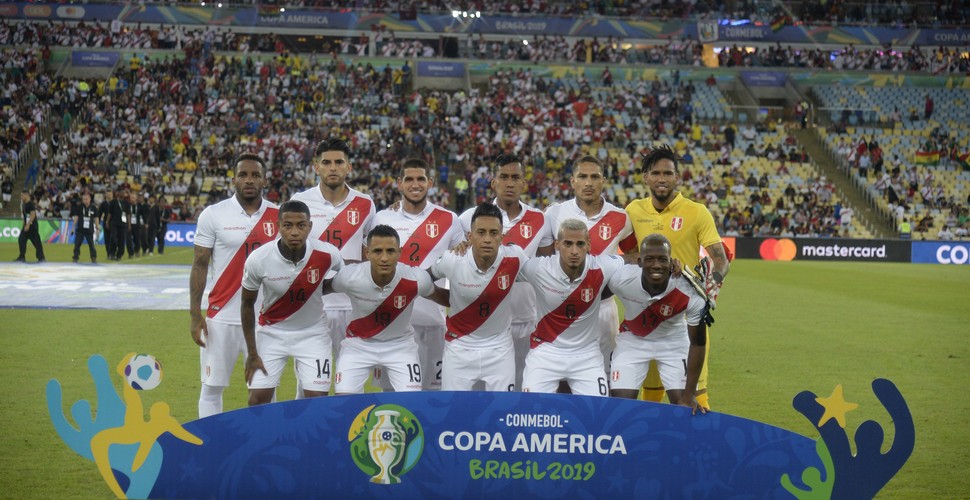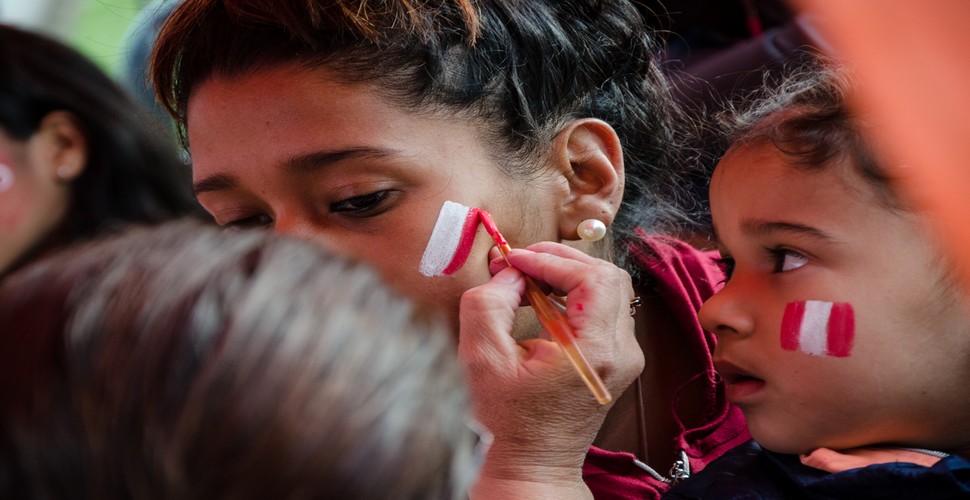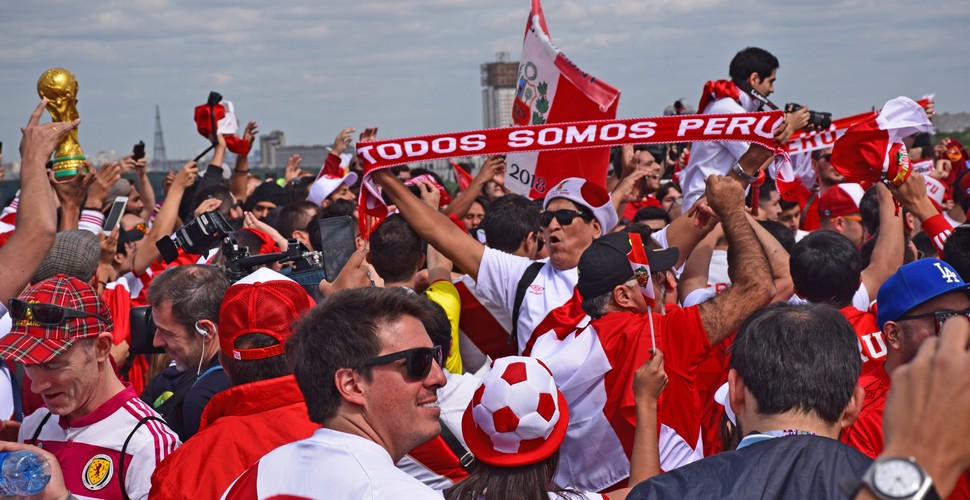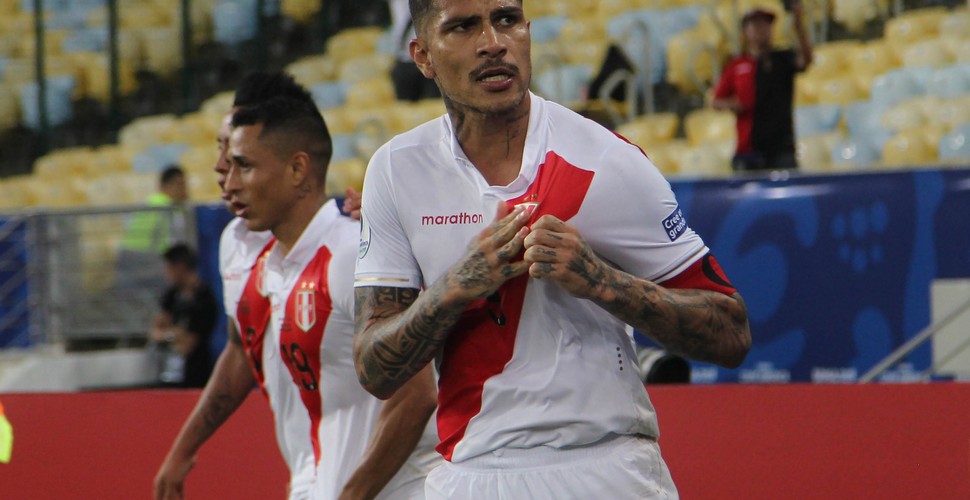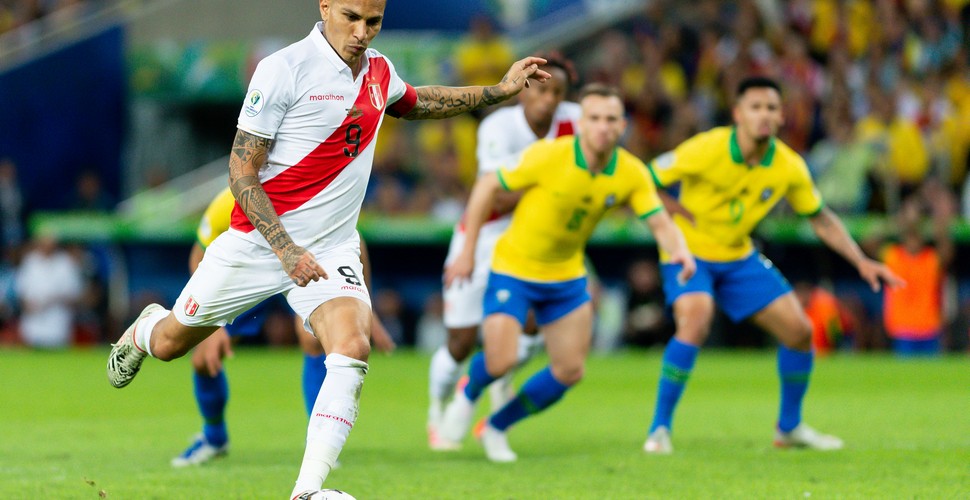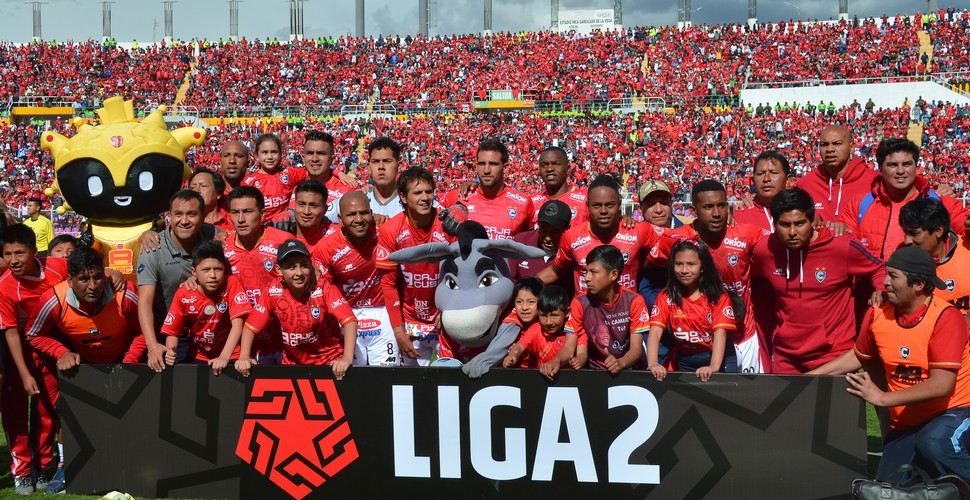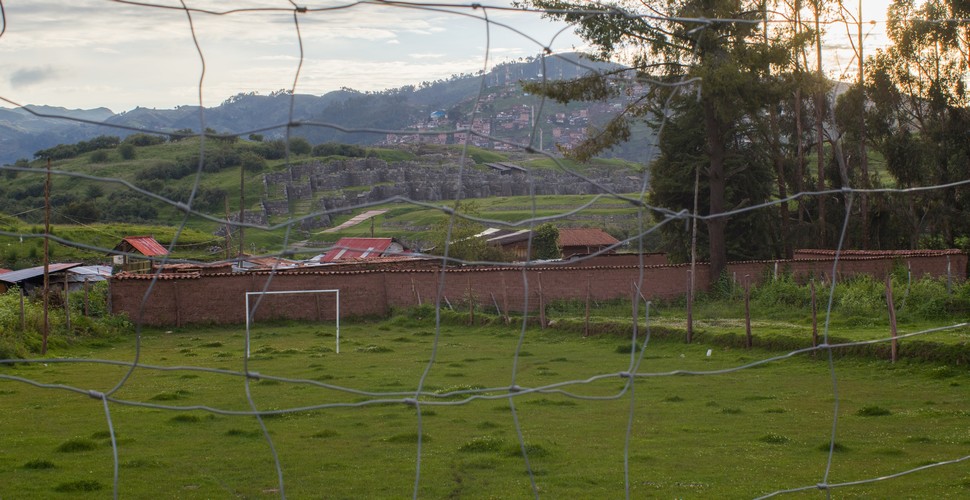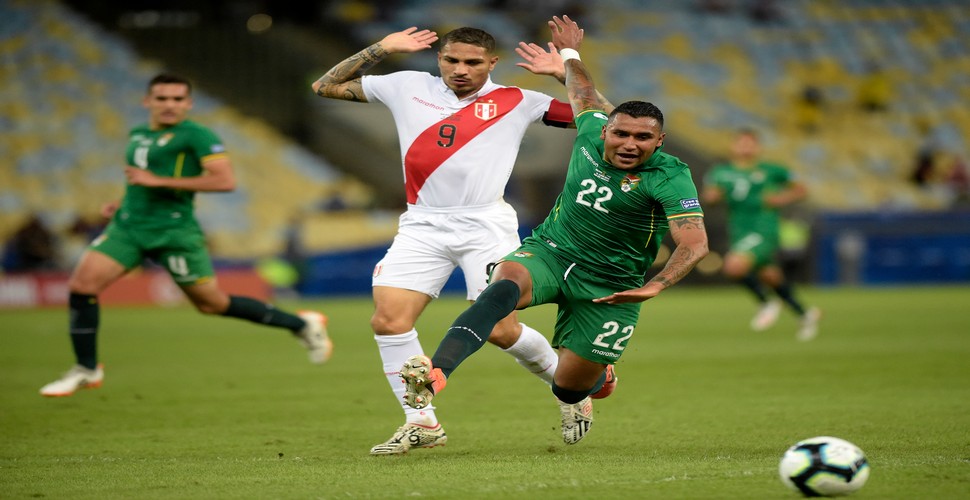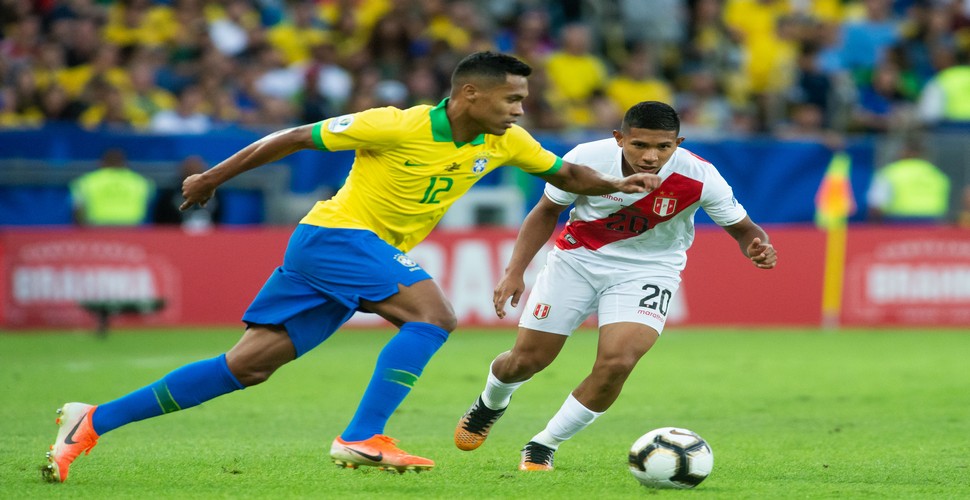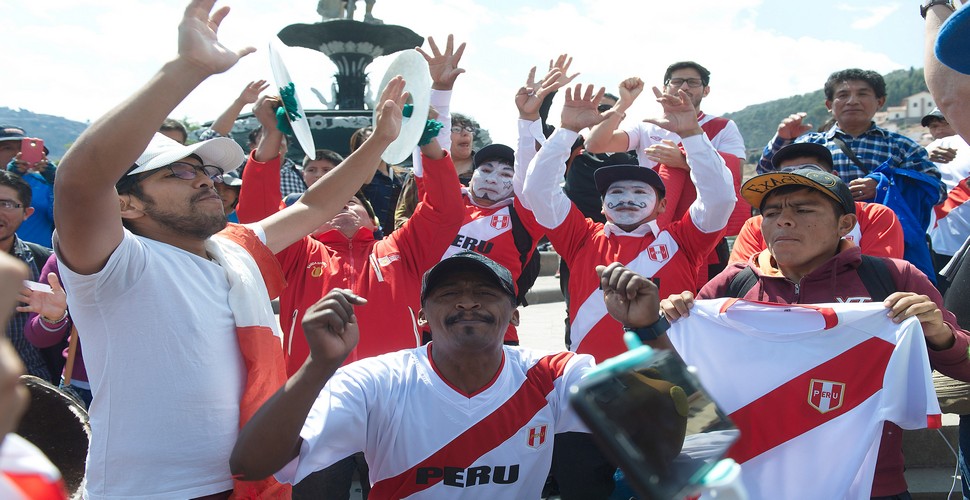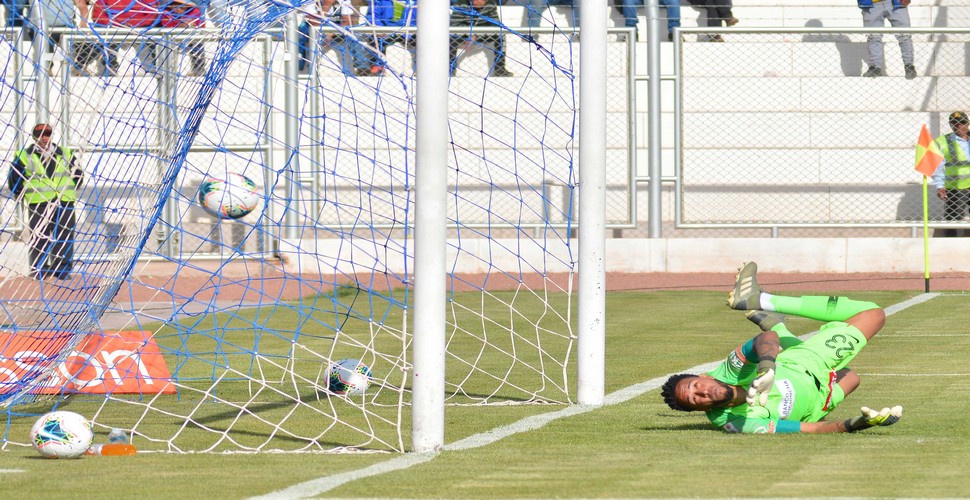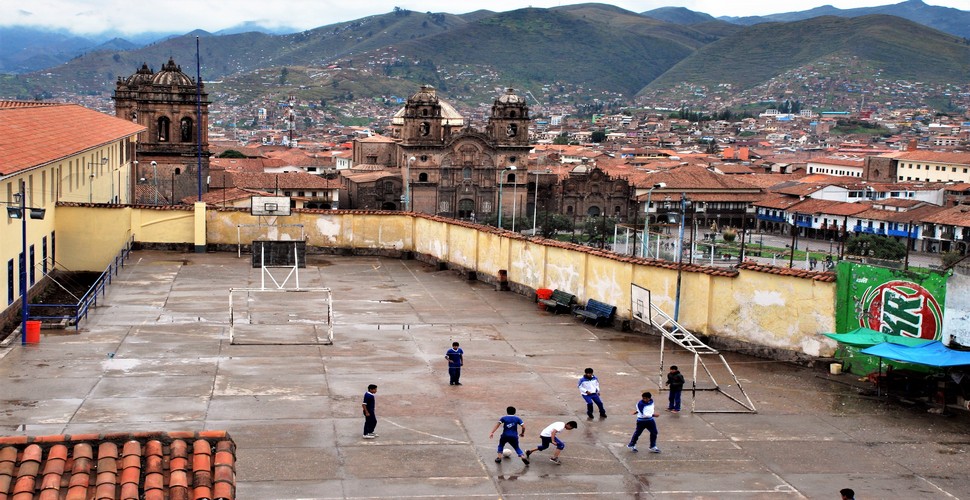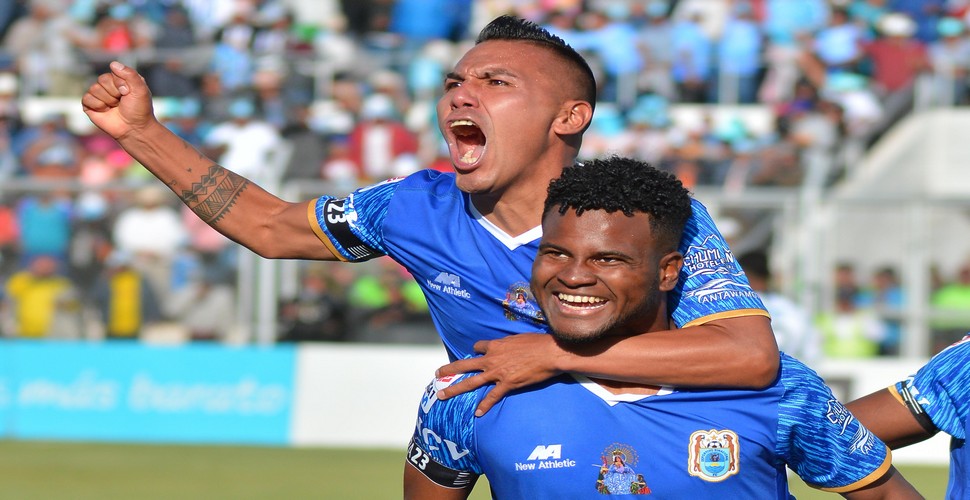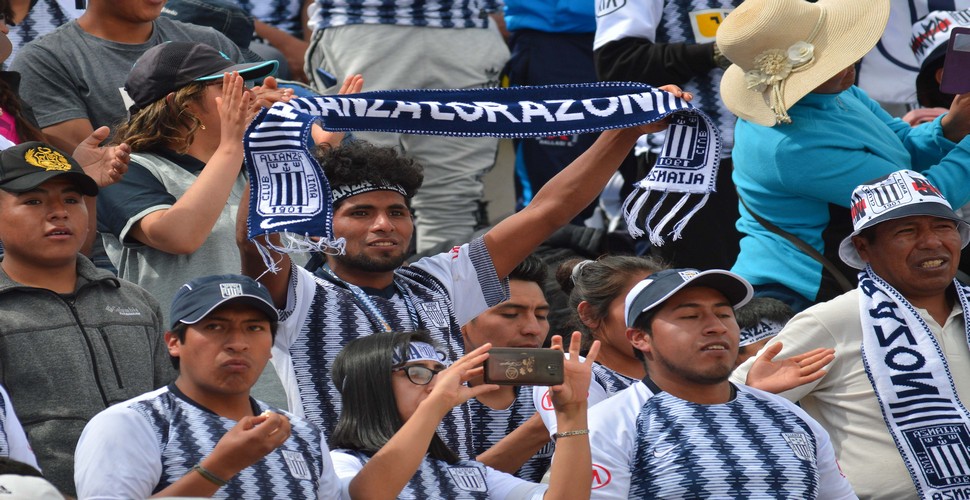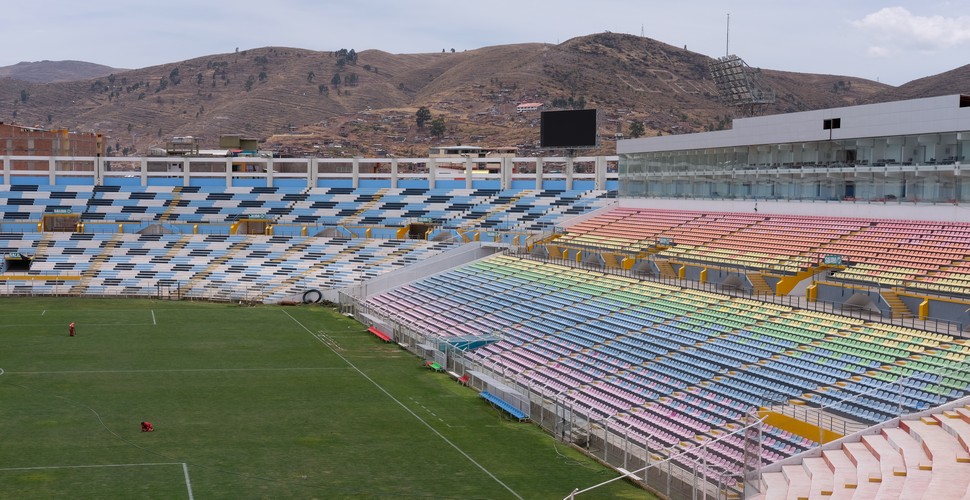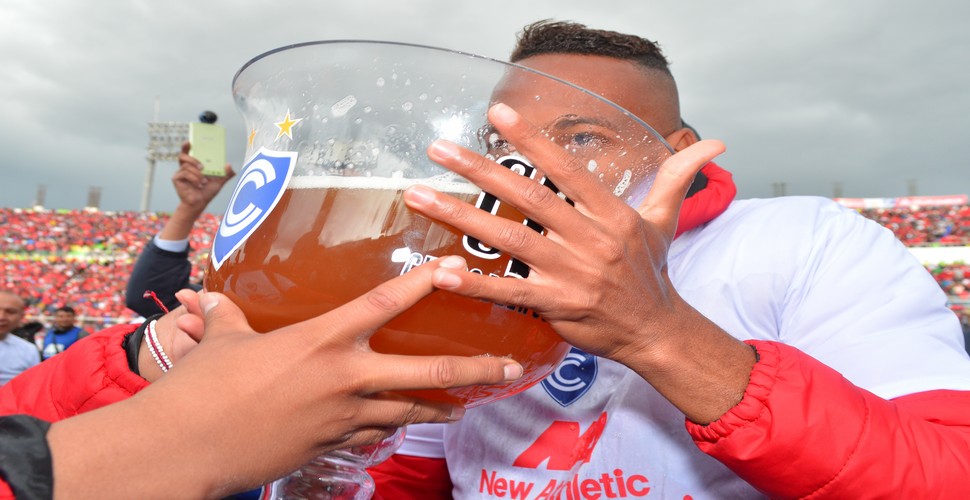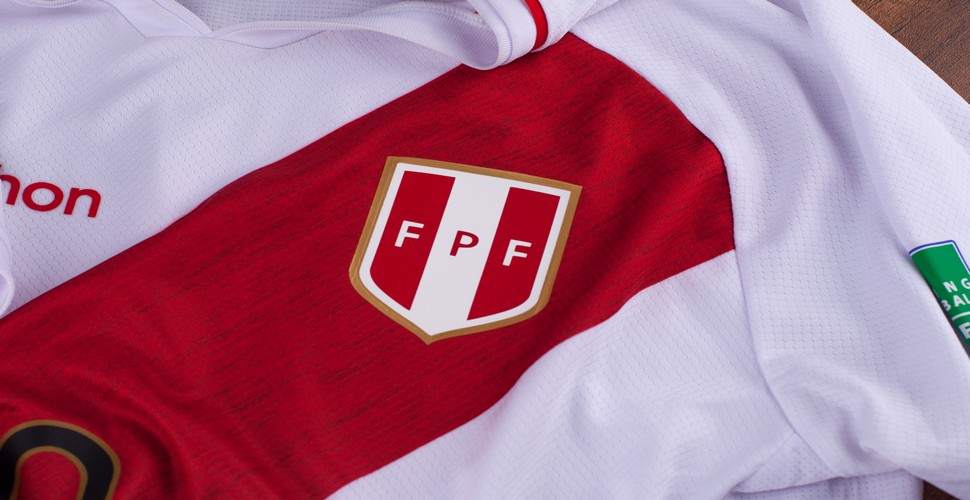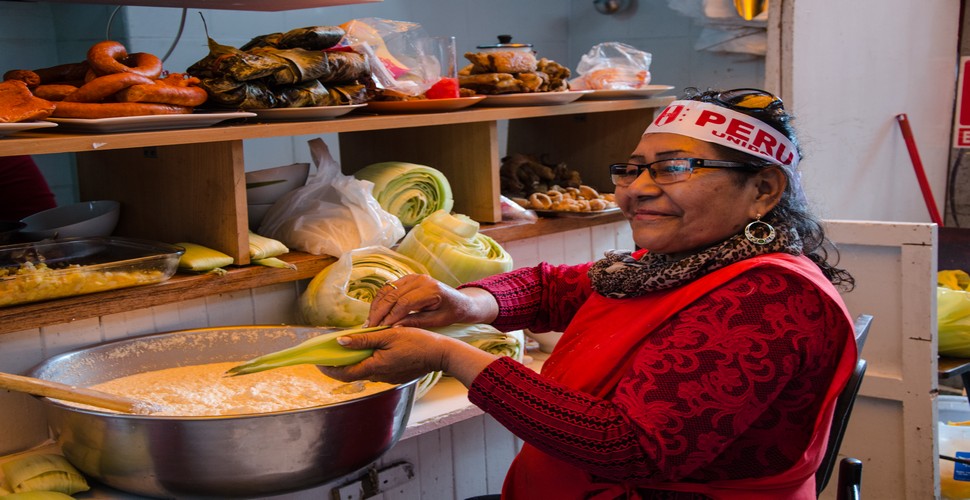
THE UNBREAKABLE BOND BETWEEN FOOTBALL AND CULTURE IN PERU
Written by:Valencia Travel
Last Update: 2025-10-03
Peru is a realm of diverse traditions, ancient wonders, and breathtaking panoramas. The country has an allure that stretches beyond the conventional tourist experience. While the nation is famed for its captivating landscapes and historical marvels, there exists a pulsating undercurrent that captures the attention of both natives and explorers: Peru's profound ardor for football, known as soccer in the USA.
Just like the whole of Latin America, football is the sport choice for Peruvian people. Transported by an invincible fever during a match, opposing traditional rivals, all the country seems to be suspended in time when it is match day. Sunday’s Pichanga is also inescapable, a local match between different football clubs, with friends, on wasteland, on a "cancha" or in the highlands of lost Andean communities, everybody plays football, all over the country. As well as being a national pastime, football is very much a community activity and the sport continues to unite people from all different walks of life when it's time for the football match. Find out more about why you should go to a football match when you visit Peru.
The National Football Team
Football's Journey in Peru
In Peru, football isn't just a sport, it's a cultural odyssey that weaves itself intricately into the fabric of society. From the bustling urban sprawl to the serene remoteness of highland hamlets, football's omnipresence is palpable. Whether you are in The Amazon, high in The Andes Mountains, or on a Pacific beach, the streets, local parks, and fields are improvised with passion where the young and old convene to play the national sport.
Peru Has a Long Football History
Peru has been playing football since the 1800s when the sport was imported to the country by British sailors and immigrants. As early as 1845, the influential sports group the Salon de Comercio was promoting the spread of fútbol alongside fellow British imports such as cricket and Rugby. In 1912, the country hosted its first league competition, featuring teams that still dominate the Peruvian leagues to this day, Alianza Lima and the Universitario de Deportes. By 1927, the country had its own official national team, known popularly as Los Incas or La Blanquirroja, after the red and white colors of their football strip, which played in the first-ever World Cup in 1930 and the 1936 Olympics in Berlin. Since that time, football in Peru has only expanded, with teams competing locally and internationally.
Girls Playing Football in Chinchero
Football's Role in Shaping Peru
The roots of Peru's football fervor extend back to the late 19th century when British immigrants introduced the sport, and it rapidly gained traction within local communities. Since then, football has matured into an inseparable part of Peru's collective identity, igniting flames of pride and solidarity that burn brightly. "La Blanquirroja," the beloved national football team, stands as an embodiment of the nation's aspirations. The anticipation preceding international clashes, particularly during flagship tournaments such as the FIFA World Cup and Copa America, surpasses mere enthusiasm. Streets drape themselves in the national colors, jerseys become a uniform of allegiance, and gatherings morph into fervent celebrations as the nation rallies behind its national team.
The National Team
The Peruvian national soccer team of the 1970s (known as The Golden Generation) probably deserves a spot on the list as well. After a decline in the 60s, La Blanquirojo came roaring back with a team of young stars, whose careers climaxed with their victory at the 1975 Copa America. The new team stunned the world at the 1970 World Cup with shocking victories over Argentina, Bulgaria, Germany, and Morocco, before losing to Brazil 4-2 in what is still widely considered to be one of the greatest World Cup matches ever played. The Golden Generation even had its own version of Michael Jordan or Babe Ruth: Teófilo Cubillas, who the International Federation of Football History and Statistics has ranked as the 48th greatest soccer player of the 20th century. To this day Cubillas still holds the record for most goals scored by any Peruvian player.
Peruvian Football Fans in Russia
Football as a Unifying Force
Peru's passion for football surpasses mere athletic competition; it fosters a sense of togetherness that transcends societal divides. Whether one is a die-hard supporter or a curious observer, participating in the revelries of a Peruvian football match offers a gateway into Peruvian life. The camaraderie among fellow spectators, the shared euphoria after a goal, and the good-natured taunting during rival matches all exemplify the profound connections forged through the beautiful game of football.
Football Fans United
Beyond Struggles, Into Inspiration
For Peru, football serves as both a source of elation and a wellspring of aspiration. The nation's history narrates tales of triumphs and tribulations, both on and off the field, and yet the spirit of tenacity inherent in football mirrors the resilience of its people. The team's victories and defeats parallel life's highs and lows, rendering the sport a well of motivation and optimism for the people of Peru.
Cienciano Fans
Embracing the Rhythm of Peru's Football Culture
For travelers venturing to Peru, delving into the realm of football presents an avenue to connect with locals on a personal level. Being part of a live match, whether in Lima's historic Estadio Nacional or a smaller local arena, such as the Garcilaso stadium in Cusco, offers a firsthand encounter with the intensity and fervor that epitomize Peruvian football culture. Cienciano of Cusco is still the only Peruvian team to win an international competition (The Copa Sudamericana), beating River Plate of Argentina in the 2003 final. Exploring local markets and shops may unveil opportunities to acquire team memorabilia, such as jerseys and scarves, or on match day around the stadiums, the streets turn into a market of football jerseys to buy the strip of your favorite team, serving as enduring tokens of your voyage through Peru's football heritage and culture.
Avid Cienciano Fans in Cusco
Football and Music
In 1969, composer Félix Figueroa Goytizolo was inspired to write a polka that would immortalize the first Peruvian team to ever qualify for the World Cup. Players like Teófilo Cubillas and Héctor Chumpitaz were among those cemented in the lyrics of the song, titled “Peru, Campeón.” Those were the glory days for Peruvian soccer—participating in World Cups and winning a Copa América title in 1975. In 1978, composer Augusto Polo Campos’ “Contigo Perú” became the anthem that led the team to qualify for the second time for the World Cup. Peru really likes combining music when it comes to the World Cup and football in general. These songs have continued to be a way to support La Blanquirroja throughout the years and were amped up more than ever in 2017 to nudge Peru into the Russia 2018 World Cup.
Why Embark on A Football Trip to Peru
Uncover the soul-stirring allure of Peru's football culture as you delve into the fervor that binds communities together. This journey promises an authentic encounter with the country's beating heart, offering a unique perspective on the importance of soccer in shaping Peruvian identity and fostering a sense of unity. The importance of football in Peru cannot be overstated, whether you are supporting the national team, or going to a local match in Lima, Cusco, or even in the high elevation of Juliaca near Lake Titicaca, you can be certain that football is an integral part of Peruvian life, running through the veins of the country.
Peru Fan
Is Doing a Football Tour of Peru Worth It?
Absolutely. Beyond the thrill of witnessing passionate football matches, this adventure offers a multifaceted experience, immersing you in Peru's rich history, vibrant traditions, and breathtaking landscapes. The cultural exchange with locals and the electric atmosphere of a live game make it a journey that transcends typical travel experiences. If you are looking for the most authentic, passionate, and fun cultural immersion experience, head down to the nearest football stadium on your Peruvian vacation package.
Face Painting For The Match
Wearing the Blanquirroja
Red-and-white is pretty much your skin for 90 minutes when Peru is playing. Peruvians will most likely be wearing the jerseys of la Blanquirroja or have the Peru flag draped over their shoulders like a cape. ESPN also reported that jersey sales in Peru climbed to over three million before the first game of the inter-confederation playoffs against New Zealand for World Cup qualifying.
Peru Football Fans
Paolo Guerrero
Paolo Guerrero, Peru’s leading all-time scorer, the player who scored six goals in the final round of qualifiers, and the man who basically got Peru to qualify for the World Cup..... failed a drug test. It could be flu medicine, or the coca tea he was given at the club hotel....who knows, but the point is that he’s not playing in the final game that will DETERMINE PERUVIAN LIVES FOREVER. I’m being dramatic, but fútbol is dramatic. Everyone was on edge to hear any news when it comes to the golden boy of Peruvian football. Even though Peru hadn't made it to a World Cup in 36 years, doesn’t mean that Peru fans don’t get pumped to watch when their team plays in World Cup qualifiers or in any other matches—especially in the last couple of years. In the 2015 Copa América, Peru made it to third place, and last year, the team made it to the quarterfinals at the Copa América Centenario. The World Cup qualifiers gave even more of a reason to bring out the pisco, pop open a cerveza, and party. At the end of the day, win or lose, after a couple of rounds, it could carry on the party or serve to ease the pain of disappointment. Not to get all somber, but how do young Peruvian fans know the pain of missing a World Cup time after time after time? For many Peruvians, their parents and grandparents tasted that bit of glory in the ‘70s and remained hopeful it’ll happen again in their lifetime. Even though Peru hasn’t made it to a World Cup in 36 years, that doesn’t mean that Peru fans don’t get pumped to watch when their team plays in World Cup qualifiers or in any other matches—especially in the last couple of years.
Guerrero
Peru did qualify but Guerrero faced a 14-month ban for the alleged doping. However, due to an appeal, Guerrero was allowed to make his World Cup debut on 16 June 2018, coming off the bench in the 1–0 loss to Denmark. On 26 June, he assisted André Carrillo's goal, which was Peru's first World Cup goal in 36 years, and scored the second goal in Peru's 2–0 win over Australia, in the team's final group match, as his side suffered a first-round exit from the competition.
Paulo Guerrero Against Brazil
Club Football
The ups and downs of the national team only add to the suspense and emotion faced on a weekly basis at club level. The Peruvian league and competitions such as the South American Cup and The Copa Libertadores, keep the football scene interesting. Cienciano from Cusco is still the only team to win a South American cup, which they did in 2003 beating River Plate from Argentina in the final. Being the only Peruvian team to win an international tournament at team level. You can easily go and watch Cienciano when you travel to Cusco, Peru. If you want to go to a match in Lima, the main teams are Universitario, Alianza Lima, and Sporting Cristal. Matches are generally on a weekend and tickets are usually available. We recommend buying a ticket in the “occidental” which are generally the most expensive but are seated and are the safest parts of any stadium, with the home fans. Ask here for more information.
Recently Promoted Cienciano of Cusco
Itinerary Options for a Football Tour in Peru
Itinerary 1: "Urban Soccer Adventure"
Lima - Estadio Nacional:
Explore Lima's historic center.
Visit Estadio Nacional, Peru's premier football stadium.
Arequipa - Melgar:
Explore Arequipa's historic center.
Attend a local football match featuring Melgar.
Puno - Juliaca (Binacional):
Explore Puno and Lake Titicaca
Attend a local football match in Juliaca featuring Deportivo Binacional.
Cusco - Cienciano and Machu Picchu:
Explore Cusco's historical sites.
Attend a match at the Estadio Inca Garcilaso de la Vega to see Cienciano or Real Garcilaso.
Full-day excursion to Machu Picchu.
Itinerary 2: "Coastal & Highland Soccer Trail"
Lima - Alianza Lima:
Explore Barranco.
Visit Alianza Lima's Matute Stadium and catch a match.
Arequipa - Melgar:
Explore Arequipa.
Attend a local football match featuring Melgar.
Puno - Juliaca (Binacional):
Explore Puno and Lake Tiicaca
Attend a local football match in Juliaca featuring Deportivo Binacional.
Cusco - Cienciano and Machu Picchu:
Explore Cusco.
Attend a match at the Estadio Inca Garcilaso de la Vega.
Full-day excursion to Machu Picchu.
Football pitch Near Sacsaywman
Is a Football Trip to Peru Difficult?
While this adventure caters to all levels of travelers, it's essential to be prepared for varying terrain and altitudes. A moderate level of fitness is recommended, ensuring you can fully enjoy both the soccer experiences and the cultural explorations. Some of the football stadiums are at high elevations so acclimatize adequately. Most stadiums are easy to get to and tickets are generally easy to purchase a day before. For a national match to see the Peru team, you will need to book in advance as these sell out quickly.
Peru v Bolivia
Trip Advisor Comments
Estadio Nacional, Lima:
"Attended a match at Estadio Nacional – what an incredible atmosphere! The passion of Peruvian fans is unbeatable. The stadium is well-maintained, and the energy is contagious."
Melgar Match in Arequipa:
"Caught a Melgar match in Arequipa – a must for any football fan visiting Peru! The fans are spirited, and the local vibe adds to the authenticity of the experience."
Deportivo Binacional in Juliaca:
"Juliaca surprised me with its football fervor. The match with Deportivo Binacional was a highlight of my trip. The local enthusiasm is palpable, and the stadium's setting is unique."
Cienciano in Cusco:
"Cienciano's home game in Cusco was unforgettable. The blend of history and football creates a magical experience. Don't miss the chance to witness a match in this stunning city."
Alianza Lima Experience in Lima:
"Visited Alianza Lima's Matute Stadium and caught a match – a fantastic blend of football and Lima's culture. The pre-match rituals and the lively crowd make it a memorable event."
"This soccer adventure exceeded my expectations! The blend of soccer passion, cultural immersion, and stunning landscapes made it a trip of a lifetime. The local guides were fantastic, providing insights that went beyond the game. Highly recommended!"
Peru v Brazil
Best Time to Do a Football trip to Peru
The best time to see a football match in Peru largely depends on the schedule of the Peruvian football leagues and competitions. The two main professional football leagues in Peru are Liga 1 (the top tier) and Liga 2.
Here are some general considerations:
Liga 1 Season:
The Liga 1 season typically runs from February to December, with variations in the exact start and end dates each year.
The most intense and exciting matches, including derbies and important league fixtures, are often toward the end of the season during playoff stages.
Copa Bicentenario:
Copa Bicentenario is a knockout competition usually held in the mid-year months, offering additional opportunities to catch competitive matches.
International Breaks:
Be aware of international breaks, during which domestic leagues might have a pause as players join their national teams for international competitions.
Local Competitions:
Check for local competitions and tournaments that might be taking place in specific regions or cities.
Derbies and Rivalry Matches:
Matches between rival teams or derbies are often high-energy and intense. Check the fixture list for these special matchups.
You Will Soon Make Friends
Can You Do a Football Trip to Peru on Your Own?
Absolutely. While guided tours provide curated experiences, independent travelers can navigate Peru's soccer scene with ease. Local hospitality and a welcoming atmosphere make it accessible for those seeking a more personalized adventure. You can find out online when the matches are and where to buy the tickets. Try and choose the "Preferencial" tickets which are generally the best seats in the house and generally the safest.
Peru´s Goalkeeper, Gallese
Considerations When Choosing a Football Trip in Peru
Before embarking on this unique journey, consider factors such as your level of interest in football, willingness to engage with local communities, and openness to diverse cultural experiences. This trip is ideal for those seeking an immersive and participatory travel encounter, who love the "beautiful game", who want a fun, interactive cultural experience, and an authentic cultural experience the passion for football in Peru, during their Peru trip.
Football Pitch in a Rainy Cusco
Getting to the Stadiums in Peru
Accessing the heart of Peru's soccer culture is seamless with well-connected transportation options.
Lima:
Estadio Nacional:
Located in the heart of Lima, Estadio Nacional is easily accessible by public transportation, taxis, or local buses.
Use Lima's extensive bus system or the Metropolitano bus system to reach the stadium.
Taxis and rideshare services are widely available and can drop you off directly at the stadium.
Matute Stadium (Alianza Lima) or Monumental Stadium (Universitario):
Similar to Estadio Nacional, these stadiums are accessible by public transportation, taxis, or rideshare services.
Consider the traffic conditions in Lima and plan your travel accordingly.
Arequipa:
Estadio Monumental de la UNSA:
Located in Arequipa, this stadium is accessible by taxis, rideshare services, or public transportation. This is the home of Melgar football club.
Depending on the distance, you might choose to walk if you're staying nearby.
Cusco:
Estadio Inca Garcilaso de la Vega:
Situated in Cusco, the stadium is the home of Cienciano, Real Garciaso, and Cusco Football Club and within walking distance from the city center.
Taxis are available for those staying further away.
Puno:
Estadio Enrique Torres Belón:
In Puno, public transportation, taxis, and rideshare services are common modes of reaching the stadium.
Depending on the location of your accommodation, walking might also be an option.
Juliaca:
Juliaca has the Estadio Guillermo Briceño Rosamedina, used by Deportivo Binacional.
Similar to Puno, public transportation, taxis, and even moto-taxis are typical ways to get to the stadium.
Binacional in Juliaca, Near Lake Titicaca
Essential Packing List for a Football Tour of Peru
Clothing
Bring jerseys and scarves to support your favorite teams.
Consider neutral colors if you plan to attend matches featuring different teams.
Lightweight and breathable clothing for warm weather.
Layered clothing for cooler evenings, especially in higher altitude areas.
Rain Gear: Depending on the season and region, pack a light rain jacket or poncho.
Footwear: Comfortable walking shoes for city exploration. Athletic shoes suitable for stadium visits.
Accessories:
Hat and Sunglasses: Protect yourself from the sun, especially in coastal areas.
Sunscreen: Bring a high SPF sunscreen to protect against the strong sun, especially at higher altitudes.
Backpack: A small backpack for daily excursions to stadiums and tourist attractions.
Technology and Documentation:
Camera/Smartphone: Capture memorable moments during matches and sightseeing.
Power Bank: Ensure your devices stay charged, especially if you're using them for navigation.
Travel Adapters: Depending on your home country, you may need adapters for electrical outlets in Peru.
Tickets and Identification: Keep printed or digital copies of your match tickets and carry a valid ID or passport.
Health and Safety
First Aid Kit
Altitude Sickness Medication: If you're visiting high-altitude areas like Cusco, consider medications for altitude sickness.
Miscellaneous
Water Bottle: Stay hydrated, especially in higher altitudes.
Snacks: Pack some snacks for energy during matches and travel.
Local Currency: Have some Peruvian Soles for local purchases.
Language Guide: A basic Spanish phrasebook or translation app can be helpful.
Optional Items
Binoculars: Enhance your match-watching experience.
Portable Fan: For warm days at the stadium.
Travel Pillow: Useful during long journeys and doubles as a cushion for the concrete seats at stadiums.
Alianza Lima Fans
How to Prepare For a Football Trip to Peru.
Prepare for this adventure by familiarizing yourself with Peru's soccer history, customs, and basic Spanish phrases. Connect with local communities by learning about their favorite teams and players, fostering a deeper connection during your journey. Outside the stadium, you can always get a shirt of the team you will be supporting.
Face Paints
Tips on Altitude Sickness
Given the varying altitudes in Peru, acclimatization is crucial at some of the stadiums, such as Cusco, Juliaca, Puno, and even Arequipa. Stay hydrated, avoid strenuous activity during the first few days, and consider consulting with a healthcare professional about altitude sickness medication before your trip.
Garcilaso Stadium, Cusco
Pro Tips for A Football Trip to Peru
1. Research Local Football Culture:
Familiarize yourself with the football culture in Peru, including fan traditions, chants, and any specific customs associated with different teams.
2. Attend a Local Match:
Whenever possible, attend matches of smaller local teams in addition to those of well-known clubs. You'll experience a more grassroots level of football enthusiasm.
3. Learn Basic Spanish Phrases:
Knowing some basic Spanish phrases can go a long way in enhancing your interactions with locals, especially in smaller towns where English might not be as widely spoken.
4. Check Match Schedules in Advance:
Research the match schedules and venues in advance to ensure you don't miss any exciting games. This is particularly important during the playoffs or key rivalry matches.
5. Immerse Yourself in Local Cuisine:
Explore local food options, including stadium snacks and street food. Trying traditional Peruvian dishes adds to the overall cultural experience.
6. Respect Local Customs:
Respect the local customs and traditions, both in the stadium and in daily life. This includes being aware of cultural sensitivities and following any guidelines provided by the local authorities.
7. Stay Hydrated at Higher Altitudes:
If your tour includes high-altitude locations like Cusco, stay well-hydrated to help acclimatize and prevent altitude sickness.
8. Use Reliable Transportation:
Plan your transportation carefully, especially on match days when traffic might be heavy. Consider using reliable transportation options like official taxis or rideshare services.
9. Connect with Local Fans:
Strike up conversations with local fans to learn more about the teams, players, and the football scene in Peru. Locals often appreciate the enthusiasm of international fans.
10. Capture the Atmosphere:
Bring a camera or smartphone to capture the vibrant atmosphere inside the stadiums and the passion of the fans. This will make for great memories.
11. Stay Informed About Safety:
Stay informed about safety conditions in the areas you plan to visit. Be aware of your surroundings, especially in crowded places.
12. Be Flexible in Your Plans:
Keep your itinerary somewhat flexible to allow for unexpected discoveries or changes. You might come across impromptu matches or events that add to your experience.
13. Join Football-Related Tours:
Consider joining football-related tours or experiences offered by local guides. These tours often provide insider perspectives and access to unique football-related activities.
14. Share the Experience:
Share your experiences on social media or travel platforms, connecting with other football enthusiasts and sharing tips with future travelers.
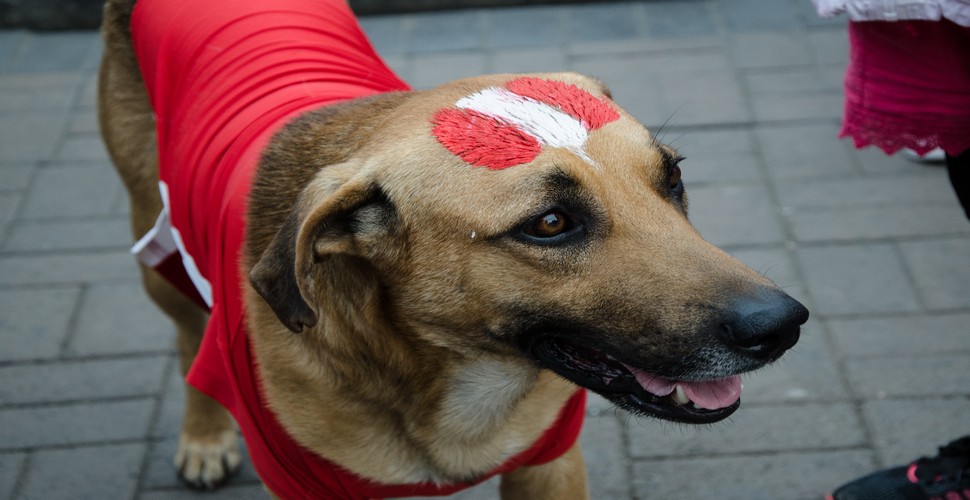
A True Supporter
Cost of a Football Trip to Peru
The cost of a football trip to Peru can vary widely based on several factors, including the duration of your stay, the cities you plan to visit, the type of accommodations you choose, and your personal preferences and spending habits. Here are some general considerations to help you estimate the potential costs:
1. Flights:
Flight prices can vary significantly based on your departure location, the time of year, and how early you book. International flights to Peru can range from a few hundred to over a thousand dollars.
2. Accommodations:
Accommodation costs vary based on the type of lodging you choose. Budget accommodations, hostels, and guesthouses are more affordable, while upscale hotels can be more expensive. Average nightly costs can range from $20 to $150 or more.
3. Match Tickets:
The cost of football match tickets can vary depending on the teams, the location of the seat, and the importance of the match. Tickets for local matches are generally more affordable than those for high-profile events.
4. Local Transportation:
Public transportation, taxis, and rideshare services are common in Peru. Local transportation costs will depend on the distance you travel and the mode of transport. Budget for daily transportation within cities and between cities.
5. Food and Dining:
Food costs can vary, but generally, dining in local markets and smaller eateries is more budget-friendly than upscale restaurants. Street food is also a cost-effective option. Plan an average of $15 to $30 per day for meals.
6. Excursions and Tours:
If you plan to include excursions, tours, or guided experiences (such as stadium tours), budget accordingly. Costs will vary based on the activities you choose.
7. Miscellaneous Expenses:
Factor in miscellaneous expenses such as souvenirs, entrance fees to attractions, and unforeseen costs. Having extra funds for flexibility is always a good idea.
8. Travel Insurance:
Consider the cost of travel insurance to cover potential medical emergencies, trip cancellations, or other unexpected events.
9. Currency Exchange and Fees:
Be aware of currency exchange rates and any fees associated with exchanging money or using credit cards.
10. Visa Fees:
Check if you need a visa to enter Peru and consider any associated visa fees.
11. Entertainment and Nightlife:
If you plan to explore the local entertainment and nightlife scene, budget for additional expenses.
12. Altitude Sickness Medication:
If you're visiting high-altitude areas like Cusco, consider the cost of altitude sickness medication, if needed.
Total Estimate:
As a rough estimate, a mid-range budget for a week-long football trip to Peru could range from $800 to $1500 or more, excluding international flights.
Cienciano Being Promoted
FAQs
Is knowledge of Spanish essential?
While not mandatory, knowing basic Spanish phrases enhances the overall experience.
Can I attend matches featuring famous teams?
Absolutely! Many tour packages include access to matches involving top-tier Peruvian teams.
Are there age restrictions for this adventure?
No specific age restrictions apply, making it suitable for a wide range of travelers.
Is travel insurance recommended?
Yes, travel insurance is advisable to cover unexpected situations and ensure a worry-free journey.
Is it safe to attend football matches in Peru?
Generally, attending football matches in Peru is safe. However, it's essential to be aware of your surroundings, especially in crowded areas. Follow local guidelines and advice for a safe and enjoyable experience.
How can I purchase football match tickets in Peru?
You can purchase tickets online through official team websites or at the stadium on match days. Some matches may sell out quickly, so it's advisable to buy tickets in advance, especially for popular teams or important fixtures.
Are there any specific traditions or customs I should be aware of during matches?
Peruvian football fans are passionate, and matches often come with energetic chants and cheers. Respect local customs, avoid offensive behavior, and immerse yourself in a positive atmosphere.
What's the best time of year to plan a football tour in Peru?
The football season in Peru typically runs from February to December. The best time for a football tour may depend on your preferences, but consider avoiding the rainy season (December to March) for more comfortable travel conditions.
How can I connect with local football fans or join matchday activities?
Engage with locals at matches, in fan zones, or at sports bars. Social media platforms and local forums may also provide opportunities to connect with other football enthusiasts.
Can I bring banners or flags to the stadiums?
Policies regarding banners and flags vary by stadium. Check with the specific stadium management or team authorities for their guidelines on bringing such items.
Are there English-speaking guides available for football-related tours?
In major cities like Lima, English-speaking guides are often available for football-related tours. Check with local tour operators or agencies for specific offerings.
What are the must-try foods during a football tour in Peru
Explore local Peruvian cuisine, including ceviche, anticuchos, and empanadas. Stadiums often offer unique snacks and street food, adding to the culinary experience.
Are there any football-related events or festivals during specific times of the year?
Check the football calendar for important events, such as championship matches, derbies, or international competitions. These events can add excitement to your tour.
How can I navigate the high altitudes, especially in cities like Cusco?
If you're not accustomed to high altitudes, acclimatize gradually, stay hydrated, and consider altitude sickness medication. Consult with a healthcare professional before your Peru trip.
What's the best way to stay updated on match schedules and events?
Follow local sports news, official team websites, and social media accounts for the latest information on match schedules, events, and any changes.
Are there football-themed souvenirs available at stadiums or local markets?
Stadiums and nearby markets often have football-themed souvenirs. Consider purchasing jerseys, scarves, or other memorabilia to commemorate your trip.
Peru´s Logo
Peru's love for football transcends sport; it's an uncontainable force that embodies unity, pride, and optimism. To genuinely apprehend the spirit of this captivating land, immersing oneself in the world of football is essential, as it offers a glimpse into the heart of a nation where the pulse of every goal resonates with dreams and aspirations. As you traverse Peru's landscapes, remember that its soul beats in harmony with the rhythm of a football, bearing the collective aspirations of an entire population. Find out more about how to go to a football match in Peru here!
Peru Fan Cooking in a Nearby Restaurant
So a long story cut short, should you go to a football match in Peru? The answer is YES! Foreigners are widely accepted in Peruvian football stadiums and wearing the colors or the shirt of the home team is generally a good way to stay safe and make new friends! If you would like to go to a football match, we can include this exciting option on a custom Peru tour... just ask!
 Aventure
Aventure
 Cultural
Cultural
 Gastronomy
Gastronomy
 Wellness
Wellness
 Local Living
Local Living
 Luxury
Luxury
